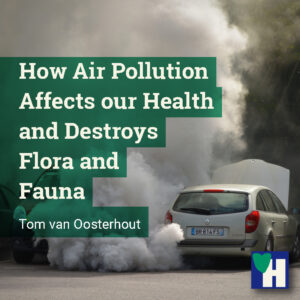
Air pollution affects our health in a very direct way. The World Health Organization (WHO) states that air pollution kills “an estimated seven million people worldwide every year”.
The toxic agents causing this disaster are particulate matter, carbon dioxide, ozone, nitrogen dioxide, and sulfur dioxide. These toxic agents are released by household combustion devices, motor vehicles, industrial facilities, and forest fires.
At this very moment, we all breathe air that exceeds the guidelines of the WHO. Low and middle-income countries suffer the most.
Stroke, heart disease, chronic obstructive pulmonary disease, lung cancer, and acute respiratory infections are the major consequences of air pollution.
Some of the links are affiliate links. As an affiliate associate, we earn a commission when you purchase any of the products offered through the shared links at no extra cost for you. This helps us maintain this website.
Table of contents
How air pollution affects our health
Man-made activities release toxic particulate matter into the air. This is a direct threat to our health and to plant and animal life on earth. We can only stop this by dramatically changing our way of living.
What’s wrong with particulate matter?
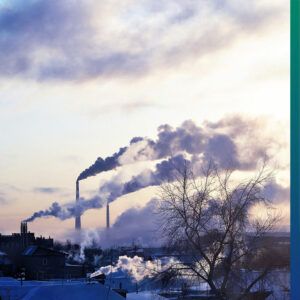
There are 3 major problems with particulate matter:
- It is small;
- Often it contains various toxic agents;
- When inhaled it penetrates the lungs.
The smallest particulates will end up in our bloodstream. The effects are devastating.
According to the Environmental Protection Agency (EPA) of the USA, particulate matter is “…a result of complex reactions of chemicals such as sulfur dioxide and nitrogen oxides, which are pollutants emitted from power plants, industries, and automobiles.”
This explains why the energy and automobile companies, already for decades, organize a worldwide lobby to counter government rules to curb the amount of particulate matter. Man-made particulate matter is the biggest contributor to air pollution.

Particulate matter is as common in Europe as anywhere else. Although it is not very clear from the EU climate policies, the fight against climate change is also aimed at reducing air pollution.
The European Environmental Agency has the European city air quality viewer. It is also possible to view today’s air quality in a city participating in the EEA air quality system.
The EPA has the nationwide alarm system AirNow. Citizens can consult these systems so they can adapt their outdoor activities to the level of pollution.
Sulfur dioxide
When you burn a match, what you smell is sulfur dioxide. It is also released by volcanic activity. In the north of the state of California (USA) is a national nature park called Lassen.
In the park are small hot mud ponds as a result of volcanic activity. Already from some substantial distance from the ponds the smell of sulfur dioxide is striking.
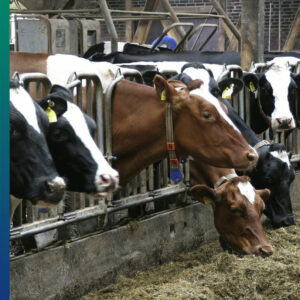
Intensive animal farms, such as pigs, chickens, and dairy cows, often have manure ponds where they store animal urine and dung. Those ponds always release a lot of sulfur dioxide. Sulfur dioxide is a toxic gas and is also released when burning fossil fuels.
Sulfur dioxide molecules easily attach themselves to all kinds of atmospheric particulates. Acid rain is a well-known result of the release of an abundant amount of sulfur dioxide in the air. On the east coast in the USA, in the Balkan in Europe, and in China, acid rain still destroys massive amounts of nature and animal life.
Nitrogen dioxide
Nitrogen dioxide is also a substantial contributor to air pollution, and a cause of acid rain, similar to sulfur dioxide. In the USA nitrogen dioxide is called an ‘extremely hazardous substance’ and strictly regulated.
Besides combustion engines, one of the biggest producers of nitrogen dioxide is the manure of intensive animal farming and the use of it in fertilizers. When in contact with water, nitrogen dioxide immediately decomposes into nitric acid which kills all plant and animal life.
Carbon dioxide
Carbon dioxide is necessary to maintain life on earth. Plants need carbon dioxide to produce the carbohydrates that feed them. In the process, oxygen is transmitted in the air as a waste product. Carbon dioxide is very common, and even necessary, in the atmosphere.
However, the excess of carbon dioxide produced by combustion engines contributes substantially to premature deaths and the loss of millions of healthy years. Moreover, it’s a major contributor, like the other pollutants, to climate change.
Ozone
The ozone layer in the stratosphere protects us from too much of the sun’s ultraviolet light. So ozone is a very important compound in the higher atmosphere.
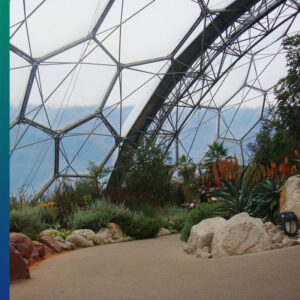
In the lower atmosphere or troposphere, ozone is an air pollutant. Ozone is not directly caused by combustion engines or industrial activity.
However, under the influence of sunlight, the ozone in the air quickly reacts with the hydrocarbons and nitrogen oxides from cars, factories, and power plants, adding to particulate matter’s polluting properties.
Ozone vastly contributes to climate change because it has a greenhouse (warming) effect 1,000 times as strong as carbon dioxide. This is because ozone absorbs, and thus contains, the energy of the infrared light emitted by the planet.
How air pollution affects flora and fauna
Taking the four major pollutants – sulfur and nitrogen dioxide, carbon monoxide, and ozone – as an example, they are all implicated in the major destruction of biodiversity.
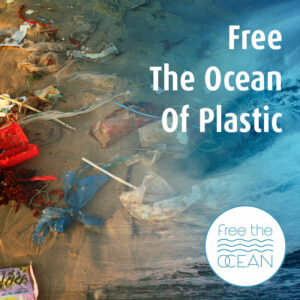
Concentrations of the pollutants, together and separately, affect plant and animal habitats. These concentrations harm vegetation, decrease growth and reduce crop yields. China is estimated to lose a third of its potential wheat and a quarter of its potential rice production, due to ozone pollution.
Particulate matter in the air usually contains concentrations of all four pollutants, which makes the particulate matter even more toxic. Acid rain is a well-known effect of the combination of these pollutants in particulate matter, with severe consequences for agricultural and natural biodiversity.
Related: Is Biodiversity Important to the Survival of Humans and the Planet?
Air pollution and climate change
The release of air pollutants is mainly driven by man-made needs: electricity, heat, agriculture, forestry, industry, manufacturing, transport, and buildings.
From mid 18th century, these man-made needs drive up the temperature of the atmosphere. The WHO calls climate change the biggest health threat in this century. Moreover, it is also a threat to any other human activity and to plant and animal life on the planet.
Related: What We Can Do about Climate Change and Why We Should.
What we can do about air pollution
The most passive way to avoid air pollution is to stay inside when the air is thick with particulate matter. In the USA and the EU citizens can consult either AirNow or the European City Air Quality Viewer. Provided of course the air inside is clean enough.
More active ways to combat air pollution is to travel less with transport means using fossil-fueled combustion engines. This includes cars that drive on electricity or hydrogen. In both cases, large fossil-fueled power stations are still required.
The best contribution we can make is to massively change to electricity produced by solar panels, wind, water, or geothermal energy. And this is where our efforts are most welcome. Putting solar panels and a windmill on your roof immediately reduces the emission of most pollutants. Moreover, they substantially lower the cost of our energy bill.
Of course, we must use our personal bodies more as means of transport. Walking and cycling are good for our health and for the air and the climate.
How do you curb air pollution? Please let us know in the comment box below.


